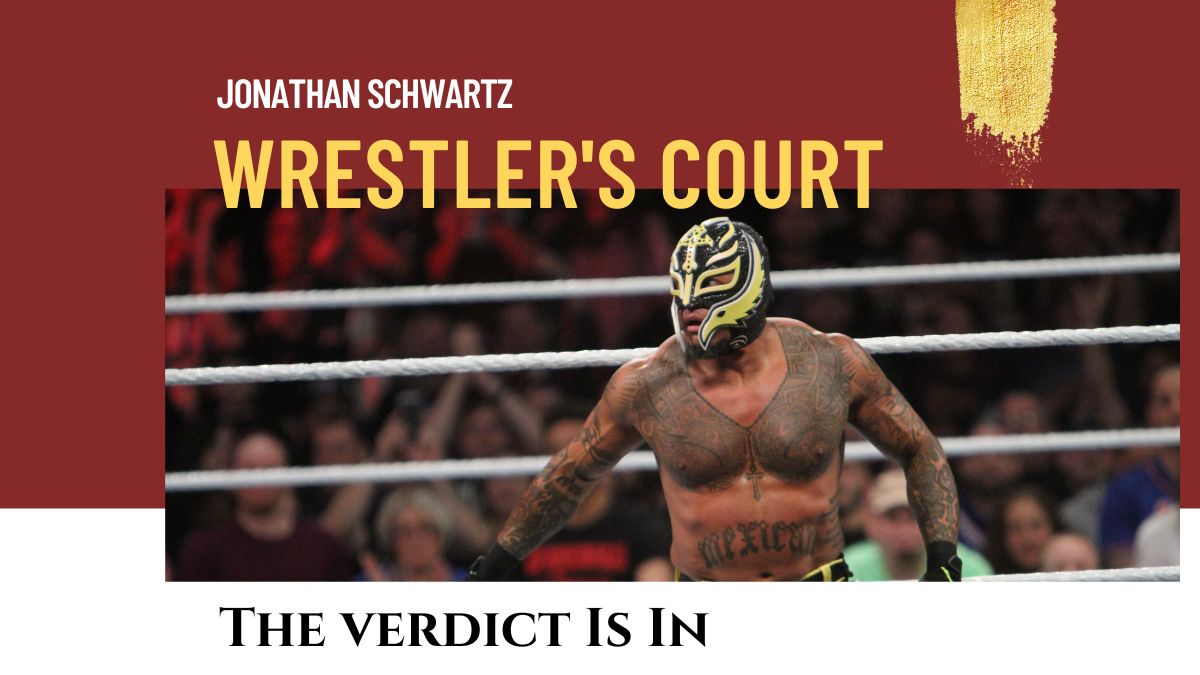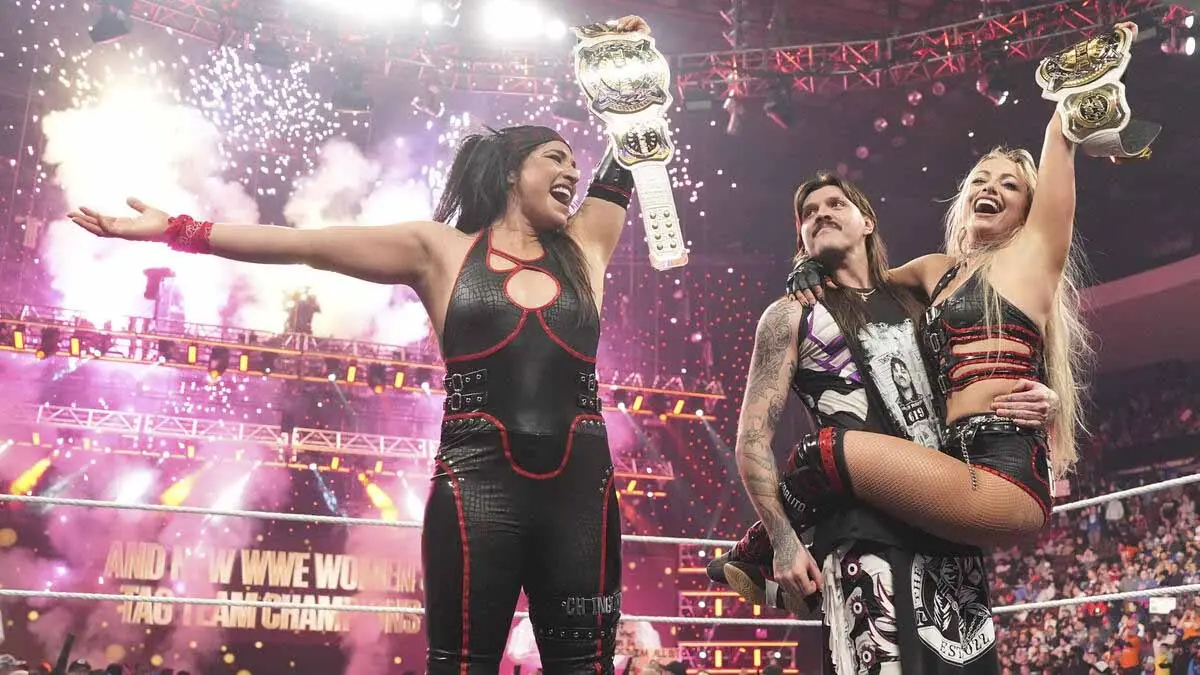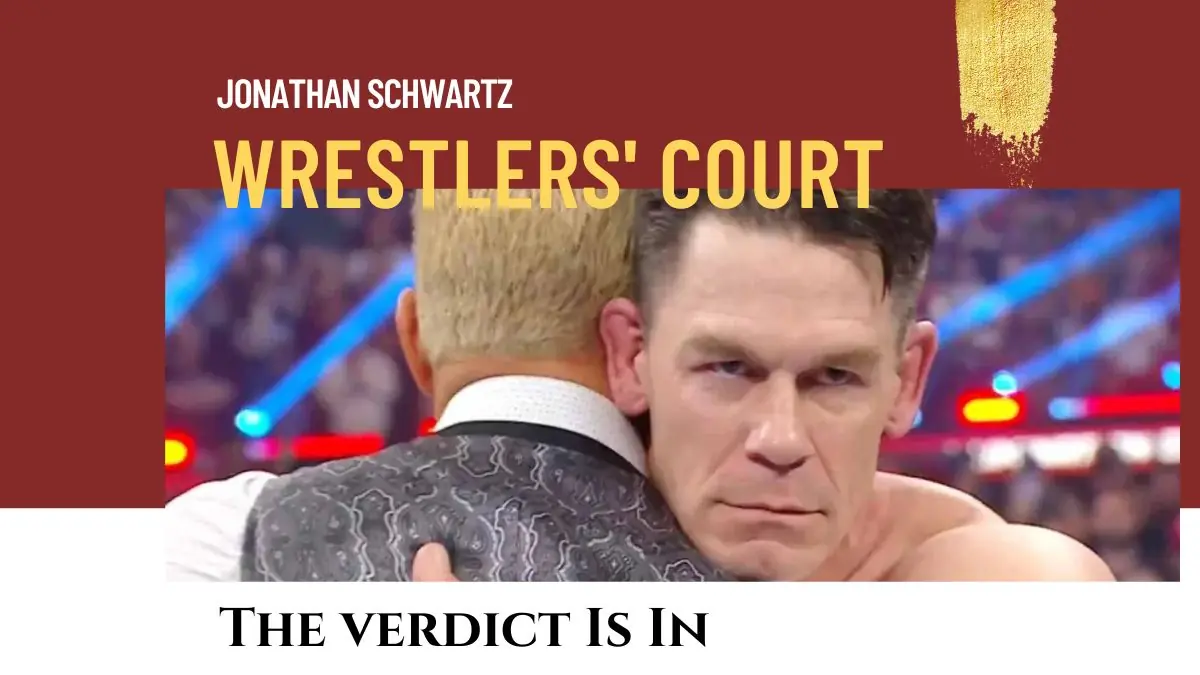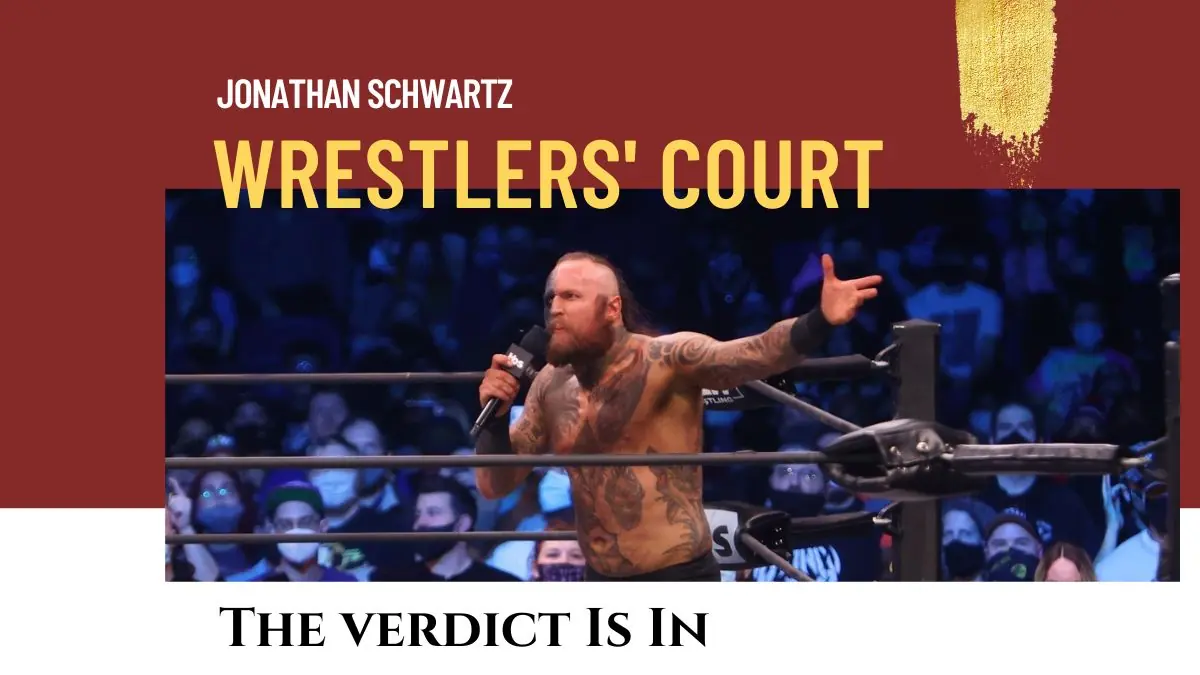On Saturday, January 28, WWE will present its annual Royal Rumble pay-per-view (I still can’t call it a “Premium Live Event”). This marks the 36th Rumble, if you don’t count assorted house shows, Raws and Smackdowns or out-of-continuity matches held in the Middle East. Not bad for an idea that Pat Patterson pitched on the back of a napkin and that made its debut in scenic Hamilton, Ontario, Canada.
The Royal Rumble has always been my favorite WWE pay-per-view. The pacing allows for frenetic action but offers built-in respites as new stars arrive. Unless a dominant wrestler clears the ring there’s never a dull moment. Spots get creative, new rivalries are born and existing programs can be advanced, all within the context of a single match. Don’t like what’s on your screen? Wait a minute or two. The view will change.
On occasion, the WWE Championship itself will be up for grabs. Ric Flair’s otherwise disappointing early-1990s run is memorable largely for his hour-long performance in the 1992 match, which saw him walk away with the belt after Hulk Hogan did Sid Justice/Vicious dirty (thankfully, Sid didn’t have a pair of scissors handy for vengeance). Since then, the prize has most often been a world title shot at that year’s WrestleMania, which triggers all kinds of sign-pointing escapades for the next few months. Rumble victories can make new main event stars or reinvigorate established or fading ones. The inclusion of a healthy mix from the top to the bottom of the card means there’s always a bit of mystery as to who will win — unlike the Money in the Bank Ladder Match, which has most often been used as a trial balloon to elevate mid-card talent. It worked for CM Punk and Edge. Not so much for Jack Swagger or Otis.

My favorite part of the Royal Rumble has less to do with who wins than with who shows up. Tony Khan has generated buzz among wrestling fans and a cute pay-per-view nickname complete with knockoff Doctor Who graphics with his ‘Forbidden Door’, but long before AEW was a thought WWE has used the Royal Rumble to give us a peek at talent from other promotions … maybe not a door so much as a drafty windowpane, but still a lot of fun.
I draw a distinction here between actual wrestlers and non-wrestlers like Drew Carey or Johnny Knoxville or Bad Bunny, whose involvement in the match itself was peripheral… or for that matter the commentators, managers, ring announcers and CEOs who have been used to pad the match when the roster was thin. To me, they’re distractions from the basic kayfabed premise that anyone has a legitimate chance to win, even more so if aided by a timely entrance slot. I’m also leaving out the host of actual WWE talent whose brief runs overlapped with the Rumble. The likes of Sam Houston, Shane Douglas, Brampton’s Own Tiger Ali Singh, Damien Demento, Saba Simba and the Squat Team have given us moments to treasure forever, but they were on the roster, however briefly.
I do like when stars debut, as AJ Styles did to a huge pop and a lasting push, Paul Heyman notwithstanding. I like it even better when absent stars or legacy talent return; either under quickly negotiated contracts like Rey Mysterio, Chris Jericho or Mr. Perfect (who had one of the all time greatest Rumble returns, coming from nowhere to make the final three in 2002), or who use the Rumble as an audition of sorts. In 2020, MVP was supposed to make a one-off appearance before retiring from wrestling, just to show his children who he once was. He’s still going strong in a managerial role and was arguably the best part of WWE’s COVID-era broadcasts. Carlito held that role last year, although he apparently wasn’t signed. Bubba Ray Dudley and Rob Van Dam have both appeared as one-offs as well, though they were not immediately tied to another promotion.

More perplexingly, after Edge’s triumphant return at the 2020 Rumble, former tag team partner Christian came back in 2021 to a thunderous ovation. A brief in-ring reunion with former tag partner Edge gave me hope that I’d see Christian back for good, but WWE failed to re-sign him and Christian has arguably had a more consistent comeback in AEW and Impact. Forget one more match, he got an Impact title reign and while out injured has transitioned into an excellent turtlenecked manager.
In recent years the Rumble has also featured NXT talent, perhaps as a way of seeing whether wrestlers like Adam Cole (Bay Bay!) or Shawn Spears were ready for prime time. Both men moved on to AEW and haven’t been seen for a while, but with WWE’s recent backstage shenanigans and aggressive moves to take free agents off the board, who knows what the future holds?
What I really mean are the occasions where stars from way outside the box appear in the Rumble. I’m sure behind the scenes many of these cases reflected WWE’s fleeting attempts to build relationships with other promotions — either abroad or regional — but despite the absolute zero chance of their winning these stars’ appearances were special because they flew in the face of Vince McMahon’s approach to wrestling, which ignored the world outside the WWF to the point of absurdity.
Since 1993, the WWE has occasionally opened the Royal Rumble to less conventional participants. That year, Puerto Rican legend Carlos Colon appeared. Gorilla Monsoon kayfabed him as a “youngster” despite being 43 years old, and an occasional competitor in New York back in the 1970s. It probably didn’t hurt that Colon’s World Wrestling Council had been partly owned by Monsoon once upon a time, and was still kept in the family, as it were.
The Great Kabuki and Genichiro Tenryu showed up in 1994 to further the Undertaker-Yokozuna storyline. The inclusion of the Dr. Tom Prichard and Gigolo Jimmy Del Ray in 1995 may or may not apply; WWE had established a working relationship with noted Kenny Omega fan Jim Cornette to help keep his Smokey Mountain Wrestling promotion afloat, but Dick Murdoch did appear as a free agent in one of his last matches before passing away. In 1996 Dory Funk Jr. had a cameo, along with a random shot by Takao Omori from Japan. Doug Gilbert continued the tradition of representing WWE’s nascent farm system — he was contracted to Jerry Lawler’s USWA, which had begun sending a stream of developmental talent to WWE eventually including some jobber named Flex Kavana.
WWE switched gears in 1997, looking to solidify its Super Astros program in Mexico and taking advantage of the local Latino population in San Antonio by bringing in Luchadores Pierroth, Cibernetico, Latin Lover and Mil Mascaras (who avoided the indignity of actually not winning the Rumble by eliminating himself).
The introduction of a separate women’s WWE Royal Rumble starting in 2018 likely ensures the inclusion of non-WWE talent in the Royal Rumble match going forward, if only because the women’s roster is much smaller than the men’s. As long as the likes of Lita, Trish Stratus, Torrie Wilson, Kelly Kelly and Michelle McCool are healthy enough to participate, they will be needed to pop the crowd and fill time until the next prospective champion comes out. The 2022 Rumble stands out. It featured a brief appearance by Impact-contracted talent Mickie James, who came to the ring with the Knockouts title and intellectual property intact. James’ participation was a big story, since it also marked her return to WWE television after she had been rudely let go and posted about it on social media, resulting in the dismissal of executive Mark Carrano. Whether this was a one-off make-good appearance or trial balloon for more inter-promotional involvement in both Rumbles remains to be seen.
If I’m going to be fair, these Rumble returns are less significant than Vince’s first and still biggest capitulation outside the self-contained WWE universe. I mentioned Ric Flair’s WWE run earlier. The Rumble made Flair within the then-WWF but what really drew fans’ attention was how he was promoted on his entrance to the promotion in August of 1991, flanked by Bobby Heenan, toting WCW’s “Big Gold Belt” (which would later be used for WWE’s World Championship) and proclaiming himself the “Real World’s Champion.” Vince being Vince, Flair couldn’t tell us who he’d worked for previously, and his extensive history with opponents like Roddy Piper was ignored. But for a promotion that had hermetically sealed itself off from the rest of wrestling since the national expansion of the 1980s, it was a big deal.
Which brings us to the rampant speculation surrounding this year’s Royal Rumble. I think that pretty much every occurrence in WWE for the next while will be asterisked as the first of its kind to happen post Vince McMahon (or during the McMahon Interregnum, as he has worked his way back onto the WWE’s Board of Directors and has tasked himself with negotiating better TV deals, if not taking WWE private or selling the company entirely) but as we get farther from his now-temporary resignation and promise not to interfere with daily operations, we hopefully get closer to a different way for WWE to do business. We may be decades removed from a time when plotlines were crafted months or years in advance, but the bones of whatever Vince had planned pre-scandal remain. Triple H took over creative shortly before this year’s SummerSlam. By WrestleMania we may start to have enough distance to see how things will change. The Royal Rumble’s relevance to that card may give us a first glimpse to a different forbidden door.
There is no pleasing professional wrestling fans. Those who enjoyed Vince’s brand of programming will see any deviation from his formula as problematic. Those who couldn’t wait for Vince’s departure will say Triple H and Stephanie McMahon aren’t going nearly far enough to modernize a stagnant product. Watching an episode of SmackDown or Raw can still be a chore, reliant on the same few characters in predictable situations and repetitive storylines and juvenile humor… except when it’s not. I do think that there have been some significant on-air changes, especially when it comes to the amount of time spent on actual matches and the quality thereof. I mentioned before that part of the Helmsley regime’s approach since taking the reins has been to aggressively re-sign talent that had been released in the dying days of Vince’s run. On one hand it’s great to see acts that I like get another chance. They’ve been regularly reintroduced quickly. Wrestlers who languished in NXT have been brought up directly to the main shows… but in some cases their signing feels like an attempt to take free agents off the market rather than a commitment to build them within WWE. A Royal Rumble debut could be an excellent hot shot for a monster heel like Bronson Reed. Instead he interfered in the Miz’ ladder match against fellow returnee Dexter Lumis.
So who gets the nod? Will WWE continue to open it’s doors to Impact talent despite my brilliant conspiracy theory that they’re a Tony Khan front? If so, Mickie James could reprise last year’s performance or Deonna Purrazzo, or Josh Alexander could make an *ahem* impact in the match. Could WWE look East, to the likes of Kazuchika Okada, Giulia, Jay White (who is rumored to be a free agent and may be on his way to WWE anyway), son of Haku Hikuleo (which would be awesome, if it opened a true Forbidden Door to a WrestleMania main event featuring the Bloodline vs. the Guerillas of Destiny with Haku and Rikishi in each teams’ corner) or the Great Muta, who famously just fought current roster member Shinsuke Nakamura for Dragon Gate. Will Matt Cardona and Chelsea Green come back to the fold, and if so can they maximize their positions after spending the last few years as bigger fish in smaller independent wrestling ponds? Could relations thaw enough between the two biggest American wrestling companies to admit Bryan Danielson or Jon Moxley into the match for old time’s sake? Probably not, but if WWE is eventually sold, the odds of that occurring may change dramatically.
WWE has almost always defined itself in terms of its opposition. In its formative years, that was the NWA (primarily led by Jim Crockett Promotions) and Verne Gagne’s AWA. Later on, Ted Turner’s WCW allegedly brought WWE to the brink of bankruptcy. TNA briefly tried but failed to beat Vince at his own game and in the absence of competition WWE manufactured its own rivalries — first with the ghosts of its biggest competitors, then with an off-and-on series of intra-promotional rivalries based on TV shows and touring groups. This isn’t surprising coming from a man who thinks sneezing is weakness, and who mauls his face with an electric razor in search of the perfect shave (seriously, Vince, try a wet shave, so much smoother and more pleasant). While Vince denied that putting WCW out of business was his goals, his approach to wrestling has always been anti-competitive; signing rival territories/ biggest stars when it suited them, then casting those wrestlers out into a deflated market. Triple H and Stephanie McMahon could be accused of similar behavior. They have rushed to re-sign many of Vince’s recent cuts who aren’t tied to AEW — in some cases even if it means taking less than Top Dolla value for remaining pieces of successful stables.
Today’s WWE seems less affronted by the idea of a wrestling multiverse. Logan Paul namechecked the idea directly in the run up to his match against Roman Reigns. WWE acknowledges wrestlers’ histories and championships especially where there is no direct competition and intellectual property rights are secure. Impact has been name-checked on a few occasions, most recently when announcer Don West passed away and then Jay Briscoe’s untimely death. The Bullet Club trademarks may be out of reach, despite their use in Japan and Mexico and Impact and AEW, but the relationships and “too sweet” hand gestures have been in play for AJ Styles, Finn Balor and the Good Brothers. I’ve already mentioned Nakamura’s match with Muta, which has ample precedent if you consider Bruno Sammartino’s, Bob Backlund’s and Superstar Graham’s ventures into NWA territory for title ‘unification’ matches against the likes of Harley Race or Ric Flair… or later, quieter appearances by Hulk Hogan against Stan Hansen or the Great Muta in Japan… or Randy Savage losing to the likes of Tenryu for Super World Sports or Bruiser Bedlam in Smokey Mountain. It could be an astute business move, a recognition that competition is good and builds brand awareness for wrestling across platforms — or it could just be that in the absence of a perceived existential threat WWE can afford to acknowledge the world outside its borders.
Of course, the real question is now what happens with Vince returning? Will the Forbidden Door slam shut? And what difference might a proposed sale of WWE make if new, presumably non-carny owners are found? And if The Rock buys in can he book himself to win the Rumble, succeeding where Shane McMahon failed? I guess we’ll have to tune in to find out.
TOP PHOTO: Rey Mysterio returns to WWE at the Royal Rumble in 2018. Photo by George Tahinos, georgetahinos.smugmug.com
RELATED LINKS




